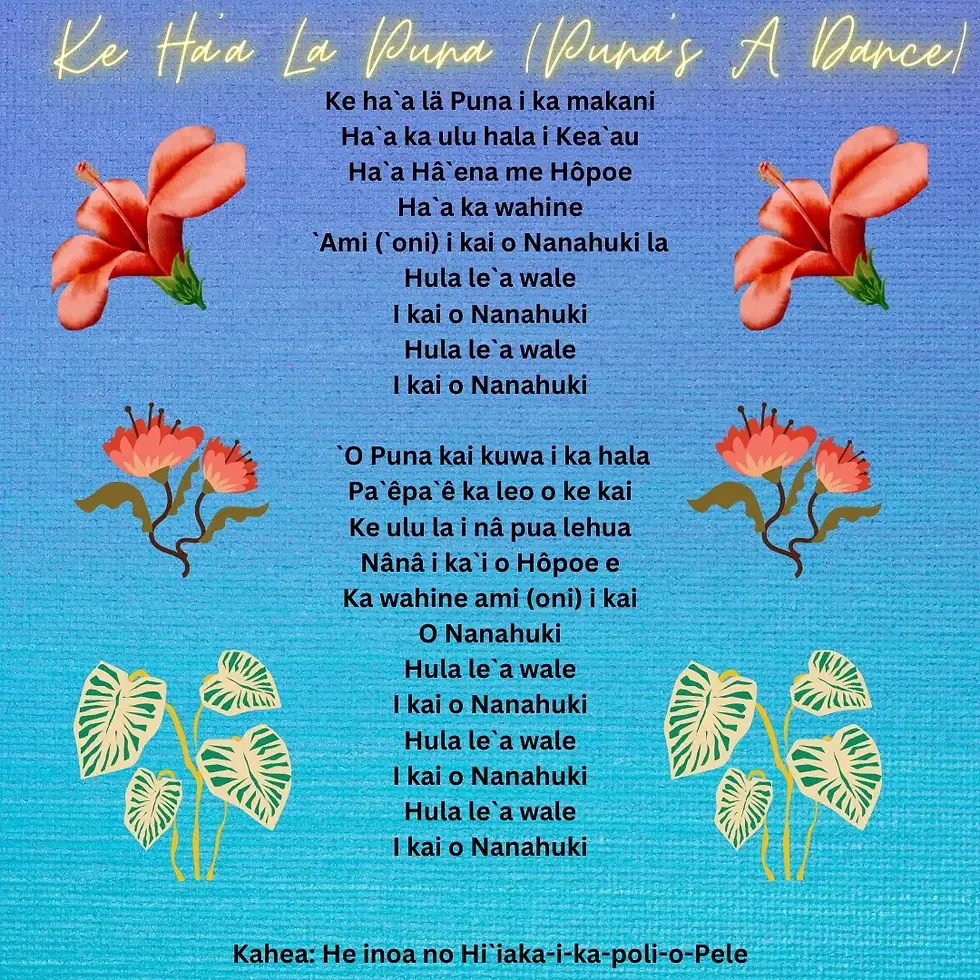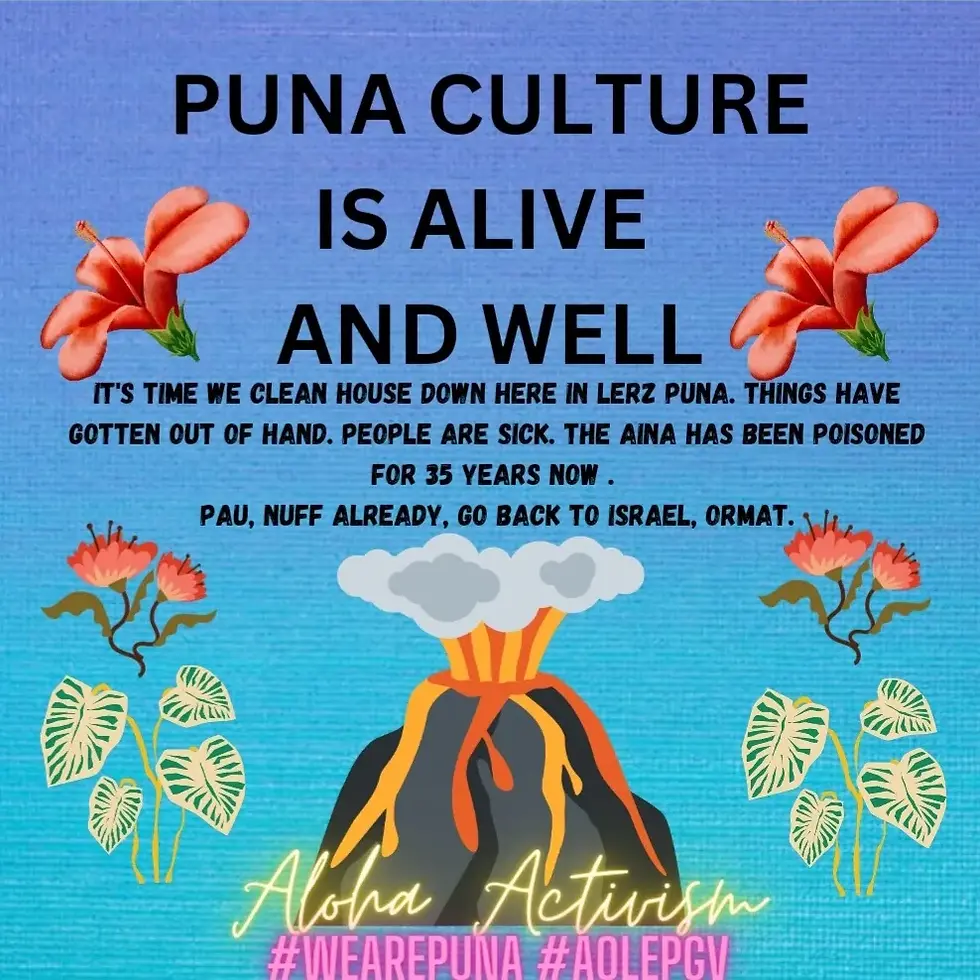PUNA–" KA ‘ĀINA O KE KAI NEHE I KA ULU HALA PUNA – LAND WHERE THE SEA WHISPERS IN THE HALA GROVES"
- Jasmine Steiner

- May 28, 2023
- 2 min read
Puna on the Island of Hawai‘i
In the ancient lore of the people of Hawai‘i, there are several things for which the district of Puna is famed—among them are the rising of the sun at Kumukahi; Pele and the geologic volcanic phenomena; the groves of pū hala (pandanus trees); growth of ‘awa (Piper methysticum); and the beach at Kea‘au where Hōpoe, the woman-turned to stone danced, or rocked in the waves on the shore. Perhaps because of her ever present eruptive and geologic presence, Pele, goddess of the volcanoes is first in the minds of many people
today when they think of Puna. But of apparent greater antiquity, Puna is famed for its association with Kāne, a Hawaiian god and ancestor of the chiefs and commoners, a god of sunlight, fresh water, verdant growth, and forests.
Puna’s association with Kāne is described in the Hawaiian saying —
Puna, ka ‘āina i ka houpo o Kāne
Puna, the land [held] in the breast of Kāne
The saying commemorates Puna, of which it is said that before Pele migrated to Hawai‘i from Kahiki, there was that “no place in the islands was more beautiful than Puna”.
More than a god of the verdant forests of Puna, Kāne is also the Hawaiian god of sun light. And the relationship between Kāne, the sun and Puna is significant throughout the Hawaiian Islands. In his role as giver of light, Kāne, also known as Kāne-i-ka-‘ōnohi-o-ka-lā (Kāne-in-the-eyeball-of the sun).
In the context of landscape, Puna is synonymous with the groves of pū hala (pandanus trees) with their fragrant clusters of hua hala (pandanus fruit born on the female trees) and the hīnano (blossoms of the male pandanus).
The fragrance of the hala permeated the kula(plains) and kahakai coastal region of most of Puna, hence the saying —
Puna pāia ‘ala i ka hala (Puna, with walls fragrant with pandanus
blossoms)
Puna, Hawai‘i, is a place of hala and lehua forests.
In olden days the people
would stick the bracts of hala into the thatching of their houses to bring some of
the fragrance indoors .
Also, the people who dwelt in Puna were known as master weavers. The most famous mat of Puna was one which was called puahala (G.S. Kahanai IN Fornander 1919 Vol. V-Part
III:626). This mat was woven from the leaf sheaths of the pua hīnano (male pandanus tree blossoms), and it was particularly favored because of its silky texture and pleasant
fragrance.
To this day, Puna is known for its growth of hala, and the floors and furniture of
some of the old households are still covered with fine woven mats and cushions. Weaving
remains an important occupation of many native families of Puna as well.

In image Here above, you can see Haena (modern day shipman), where in the legends, hula was first danced...

Taken from a 182 page document on Puna


Aloha Activism
Seeking kumu hula for puna culture Revival







Comments